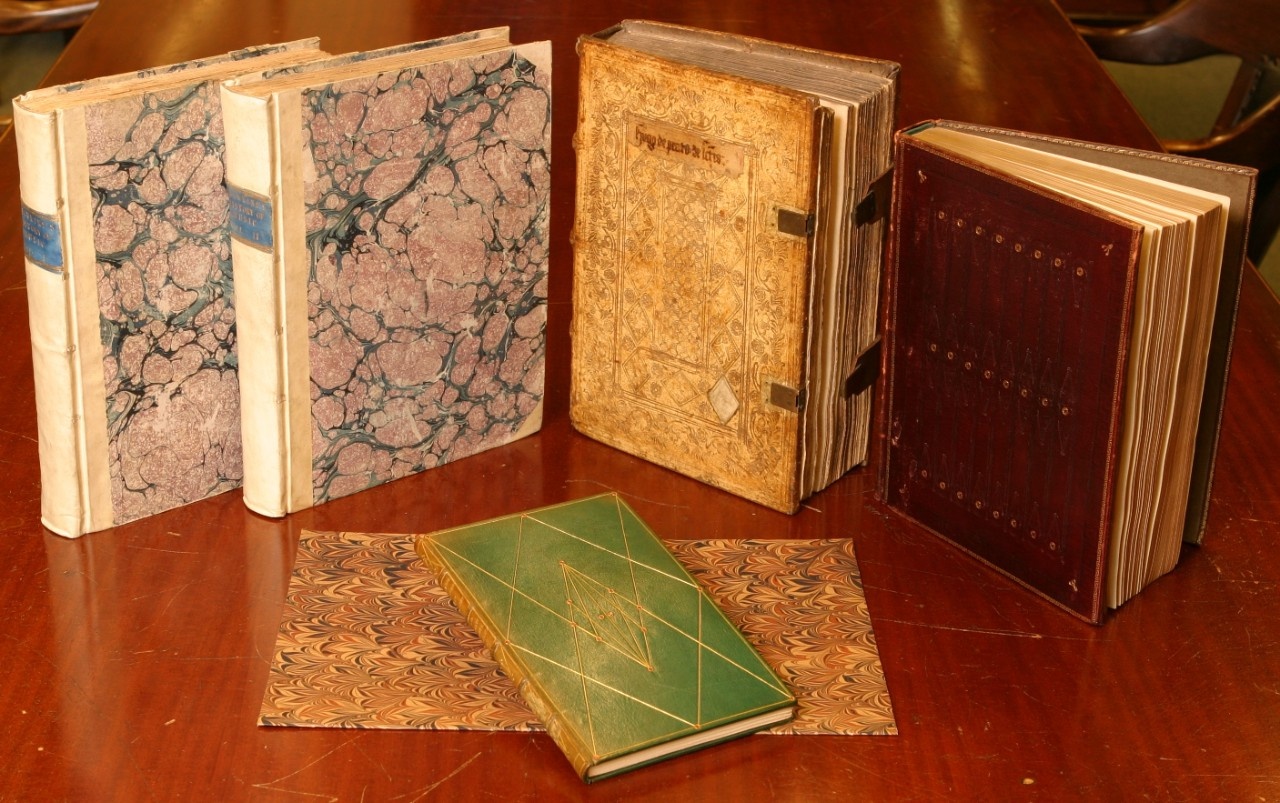Rare Books Collection

About the Dalhousie Rare Books Collection
Significant individual volumes or small collections not part of a pre-existing special collection are located in the Rare Books Collection. Generally the volumes found in Rare Books bear an imprint date prior to 1822, are from limited print runs of 500 volumes or less, contain important inscriptions or annotations and are printed outside Canada. The collection has grown to over 14,000 titles and contains works in all subject areas. Latin, English, Greek, French, Gaelic, German and Russian are the most prevalent languages. The earliest printed book in the collection dates from the 1470s and the most recent a limited edition letterpress poetry book from 2012. Areas of collection strength include printing history, exploration accounts, British history and literature, eighteenth century intellectual history, early scientific and medical texts, the works of Francis Bacon, and early naval history.
Collection Highlights
Collection highlights include the Nuremburg Chronicle (1493), Aldus Press edition of De Rerum Natura (1515) by Lucretius, Nehemiah Grew’s The anatomy of plants (1682), Francis Bacon’s Elements of the common laws of England (1630), the first printed edition of the Doomsday Book (1783), the Hus and Pragen first edition of Historia et Monumenta (1558); the first collected edition of Edmund Spenser’s Works (1616), a first edition of Camden’s Annales (1615 - 1627), John Rocque’s 1747 atlas of London, a first edition of Samuel Johnson’s Dictionary (1755), and William Shaw’s English-Gaelic Dictionary (1780). Each volume in the collection has its own story. In most cases it is the content that is significant, in others it is the binding or printing or who it belonged to and annotated it or where it has been. The breadth and scope of the collection is a constant revelation.
Significance
Developed essentially through donations, the Rare Books Collection reflects the interests, tastes, and scholarship of generations of Nova Scotians. Collectively they have assembled an impressive and unique resource for researchers of the future.
More from Vessels of Light: A Guide to Special Collections in the Killam Library, by Karen E. M. Smith.
